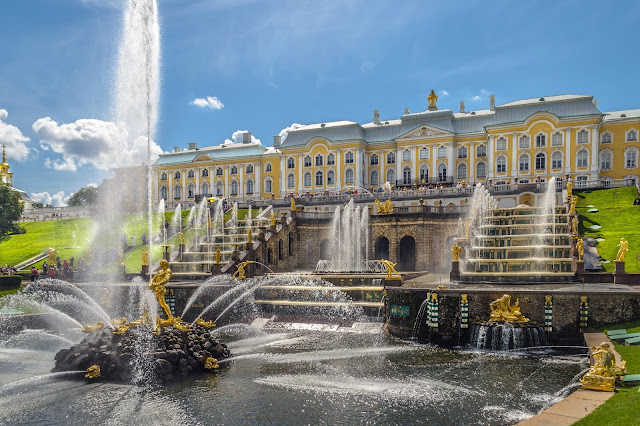Peterhof Palace is one of the grandest and most visited palace complexes in the world, hailed as the Russian version of France's Versailles and renowned for its fountains. The Palace was built in 1703 upon the orders of Czar Peter the Great to celebrate his victory against Sweden and since then, it was improved by succeeding members of the Imperial Family. Today, it is a UNESCO World Heritage Site that welcomes millions of visitors from around the world. Here are fun facts about Peterhof Palace.
1. This
wondrous group of gardens and palaces in Peterhof, Saint Petersburg, Russia has
been dubbed as the “Russian Versailles”, though many tourists claim Peterhof
Palace is incomparable to and is way more majestic than the original Château de
Versailles in France.
2. Peter the
Great built Peterhof—which translates to “Peter’s Courtyard”—out of his desire
to modernize the whole of Russia. His homeland had been known as a primitive
and backwards nation for centuries, thus he wanted to construct a grand palace
that would get people to finally take Russia seriously.
3. Peterhof
drew inspirations from royal sites Peter the Great saw while touring around
Europe, and one of those was apparently France’s Château de Versailles.
4. The
palace served as one of the residences of the Russian monarchs for more than 200 hundred years
until the empire’s collapse in 1917.
5. The
bigger part of the massive Peterhof Palace is being occupied by the infamous
Lower Gardens or the Nizhny Sad, which has a land area of 1.02 km².
6. The Upper
Gardens was originally utilized as a place to grow vegetables, and its three
ponds to cultivate fish.
7. Peterhof
has a total of 144 fountains and more than 200 statues.
8. The
palace was seized and ravaged by the German troops from 1941 until 1944, with
some of the fountains destroyed and the palace blown up and left to burn.
Restoration of the partially defaced palace began right after the war.
9. At the
Samson Fountain stands a statue of Biblical character Samson opening the mouth
of a lion, which is a representation of Russia’s triumph over Sweden during the
Battle of Poltova that transpired on St. Samson’s Day in 1709.
10. As a
result of an anti-German propaganda, the palace’s name was changed into
“Petrodvorets” or “Peter’s Palace” in 1944. The original name, however, was
also restored in 1997.
11. The
Grand Palace, which is situated right above the Samson Fountain and the Grand
Terrace, is the largest palace in whole of Peterhof.


.png)





1 Comments
You must include in the facts that the last Tsesarevich of Russia Alexei Nikolaevich Romanov was born there.
ReplyDelete